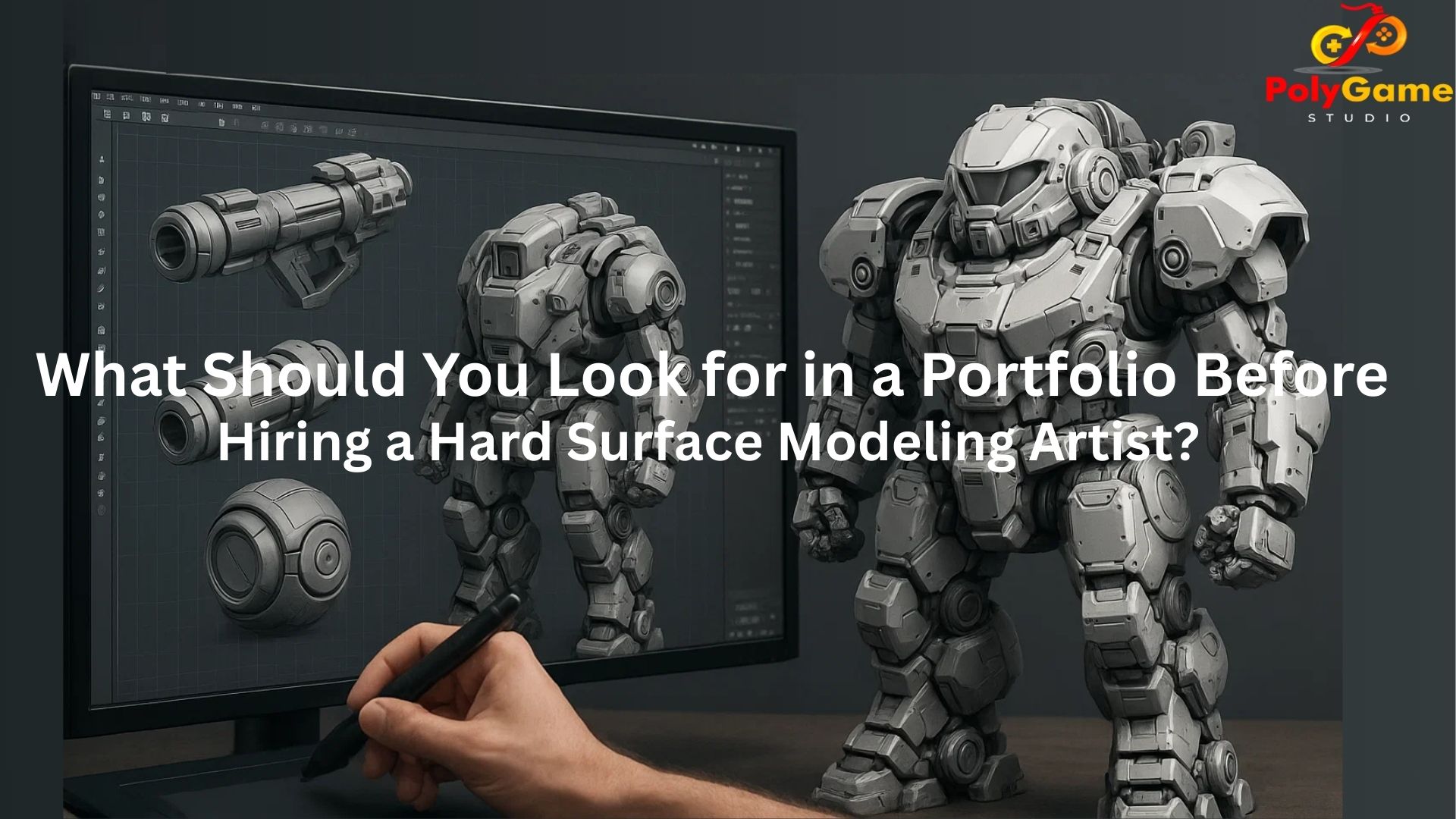Propelling Worlds What are the Latest Trends in Props 3D Model and 3D Game Assets Creation?
In the ever-accelerating world of game development, the magic isn’t just in the sprawling landscapes or the charismatic characters. Often, it’s the seemingly mundane objects – the scattered papers on a desk, the weathered barrels in a tavern, or the futuristic console in a spaceship – that truly breathe life into a virtual world. As technology advances and player expectations soar, the creation of these 3D Game Assets is constantly evolving. What are the latest trends shaping the intricate art of 3D Asset Modeling for props? Let’s dive in.
1. Photorealism and Next-Gen Detail (Driven by PBR & Nanite/Lumen):
While not universally required, the demand for high-fidelity Props 3D Model continues to grow, especially for AAA titles and realistic genres. This trend is heavily influenced by:
-
Physically Based Rendering (PBR):
This remains a cornerstone. Every Props 3D Model benefits from this standardized approach, ensuring consistent lighting and realism across the scene.
-
Next-Gen Engine Features (e.g., Unreal Engine’s Nanite and Lumen):
Technologies like Nanite allow for incredibly high poly counts on 3D Game Assets without crippling performance. This means artists can sculpt micro-details directly into the mesh, leading to unprecedented visual richness in every Props 3D Model, from tiny rivets to fabric imperfections.
2. Procedural Generation for Efficiency and Variety:
Manual 3D Asset Modeling for every single prop in a vast open world is simply not feasible. Procedural generation is a game-changer here:
-
Tool-Assisted Creation:
Artists are increasingly using tools like Substance Designer for texture generation or Houdini for complex geometric Props 3D Model. This allows for rapid iteration and creation of variations (e.g., multiple types of barrels, different rubble piles) from a single base setup.
-
Rules-Based Environments:
For dynamic or expansive levels, procedural systems can populate scenes with 3D Game Assets based on defined rules, ensuring environmental consistency and visual interest without manual placement of every single piece.
3. Photogrammetry and 3D Scanning
-
Real-World Fidelity:
Studios are leveraging photogrammetry to scan real-world objects and environments, transforming them into highly accurate 3D Game Assets. This is particularly effective for creating Props 3D Model with complex, organic details like rocks, tree trunks, or weathered urban elements, providing an unparalleled level of authenticity that traditional 3D Asset Modeling might struggle to replicate.
-
Speed and Accuracy:
While requiring careful setup and cleanup, photogrammetry can drastically reduce the time needed to create certain complex Props 3D Model, especially for high-detail realistic environments.
4. Modularity and Reusability Remain Key:
-
Modular Kits:
reating modular sets of Props 3D Model (e.g., interchangeable wall sections, building facades, street furniture) allows level designers to construct diverse environments quickly and efficiently, optimizing 3D Game Assets usage.
-
Smart Instancing:
Engines are becoming smarter at handling instanced 3D Game Assets, allowing countless copies of a single Props 3D Model to be placed without significant performance overhead, further emphasizing reusability. This also simplifies updates and changes across the level.
5. AI and Machine Learning :
-
Automated Retopology and UV Unwrapping:
AI tools are emerging that can intelligently optimize high-poly sculpts into game-ready meshes and generate efficient UV layouts, saving countless hours for artists.
-
Texture Generation and Material Creation:
AI-powered tools can assist in generating realistic textures or even entirely new materials based on simple prompts or reference images, streamlining a significant part of the Props 3D Model workflow.
-
Content Generation (Future):
While still nascent, the potential for AI to generate initial concepts or even complete 3D Game Assets based on simple descriptions is a tantalizing prospect for the future of 3D Asset Modeling.
6. Emphasis on Performance Optimization and LODs:
-
Aggressive LODs (Levels of Detail):
Artists are creating more sophisticated LOD systems, where Props 3D Model seamlessly switch between high-detail and low-detail versions based on camera distance, ensuring smooth performance without noticeable pop-in.
-
Efficient Material Usage:
Smart use of material instances and atlases (combining multiple textures into one) helps reduce draw calls and memory usage for 3D Game Assets.
PolyGame Studio: Crafting Tomorrow’s Game Worlds Today
At PolyGame Studio, we are at the forefront of these evolving trends in 3D Asset Modeling. We understand that effective Props 3D Model creation is not just about making things look good, but about integrating seamlessly into the gameplay experience and optimizing for performance across various platforms. Our team of skilled artists leverages the latest tools and techniques, from advanced PBR workflows and procedural generation to efficient photogrammetry pipelines, to deliver stunning and highly optimized 3D Game Assets tailored to your project’s unique vision.
Whether you need a vast library of modular environmental Props 3D Model, bespoke hero props that tell a story, or comprehensive 3D Game Assets packages, we are equipped to bring your world to life. Our expertise in 3D Asset Modeling ensures that every object, no matter how small, contributes to the overall immersion and quality of your game. We are committed to pushing the boundaries of what’s possible in 3D Game Assets creation, ensuring your game stands out with visually rich and performant environments.
Conclusion: The Art of the Essential
The trends in Props 3D Model and 3D Game Assets creation reflect a fascinating intersection of artistic ambition and technological innovation. From capturing reality with photogrammetry to generating endless variations with procedural tools, the goal remains consistent: to create convincing, immersive, and performant virtual worlds. As the tools become more powerful and workflows more efficient, the future of 3D Asset Modeling promises even greater detail, variety, and speed, empowering developers to craft experiences that truly transport players into their digital realms.








